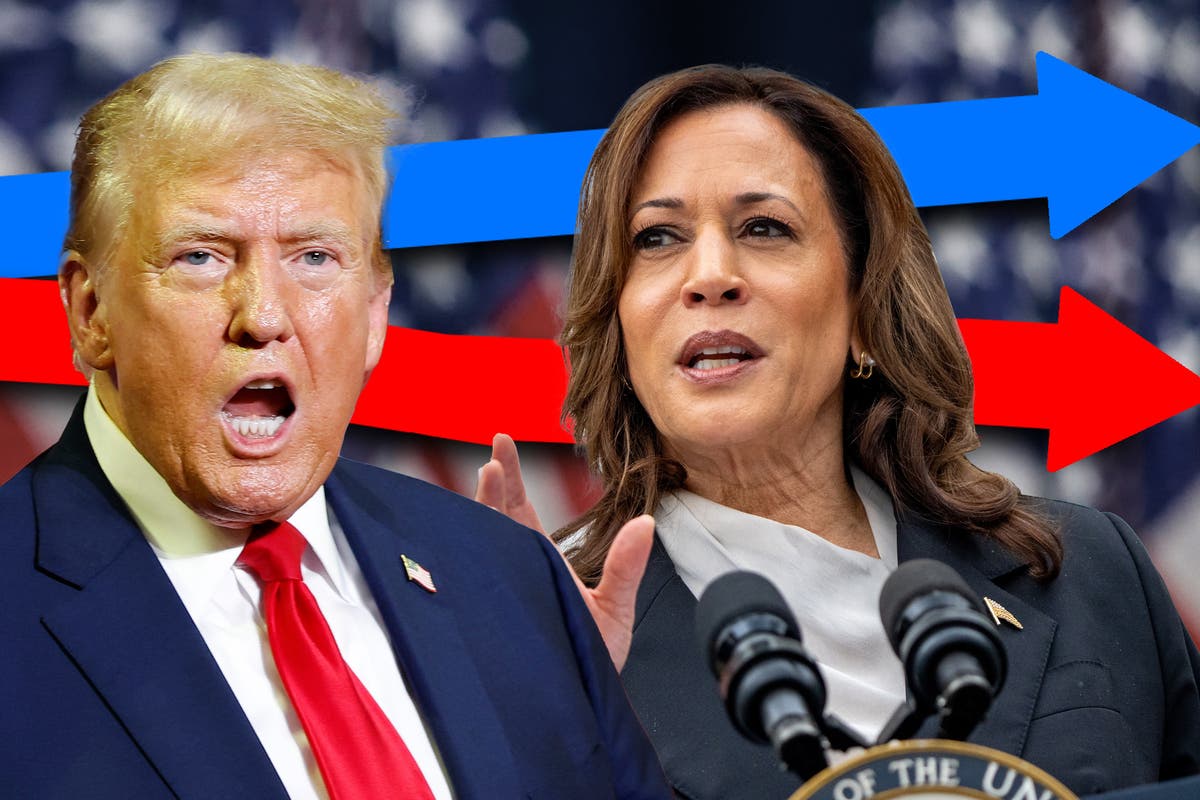World
Can Kamala Harris beat Donald Trump? Latest poll updates from the 2024 election

Vice President Kamala Harris is making a bid for the White House with running mate Tim Walz after replacing President Joe Biden on the Democratic ticket just a few months before Election Day.
So how will Harris actually fare against Donald Trump and his vice-presidential pick, JD Vance, this November?
Harris now has a 2.5-point lead over Trump in the latest average of national polls, collated by FiveThirtyEight. A new poll suggests that the gender divide between male and female voters is growing, with more men leaning Republican.
On average, Harris has been marginally ahead of Trump in national polls, though the race remains tight.
Demographics
A new CBS/YouGov poll (up to August 16) has Harris at a 3-point lead and shows a substantial gender divide is emerging between the two candidates, with more men supporting Trump and more women voting for Harris.
Trump’s key supporters remain male voters, the 45-64 age group, and white voters with no college education. But in the last group, Trump appears to have lost some of his leverage over Harris when compared to Biden.
Harris polls best with young voters, female voters, and Black voters, among whom Harris has a +65 point lead.
While Harris and Biden both typically led among white college-educated voters, the recent CBS poll suggests that Harris has only a +5 point lead over Trump in this group — a far cry from the 20+ point lead she showed in other polls a few weeks ago.
What do voters think?
A poll from Emerson College (August 12-14) shows that Kamala Harris is the only candidate of whom voters have an overall favorable opinion, at +2 percent.
This is significantly more positive than both Trump and his running mate Vance, who have a net -10 unfavorable rating, according to the poll of 1,000 US likely voters.
For live updates on the US presidential election, click here.
Meanwhile, VP pick Walz has an overall neutral favorability rating, with 39 percent of voters holding a favorable view and 39 percent holding an unfavorable view.
Interestingly, one in five voters (22 percent) said they had never heard of Walz, a week after his selection. For JD Vance the number was lower, at 12 percent.
When asked how much they approve of how incumbent Joe Biden is doing as president, voters showed net disapproval of -14 percent.
Fighting in the battlegrounds
In the seven battleground states — Arizona, Georgia, Michigan, Nevada, North Carolina, Pennsylvania and Wisconsin — the war is still being waged between Democrat and Republican campaigns.
Research from the Cook Political Report show that Harris has a lead in six out of seven states, with Trump holding strong in Nevada.
The poll shows Harris’s strongest lead in Arizona, where Biden won by just 0.4 percent in 2020.
This is a substantial swing from the same polls in May, with a Trump-Biden matchup, where Trump led in six states and tied in Wisconsin.
Yet polling in swing states continues to show variation from pollster to pollster, with a YouGov/CBS poll conducted up to the same date (August 2) suggesting that neither candidate had a significant lead in any of the battlegrounds.
Overall, battleground polls have consistently shown that Harris has picked up momentum from her predecessor’s trailing support, and is on-track to lead Trump in some states.
Republicans are attempting to downplay Harris’s growing lead as a honeymoon phase, but it’s clear that the Democratic candidate has maintained her momentum since entering the presidential race.
The latestYouGov/Economist poll (August 11 to 13) shows that Harris’s lead has remained stable since introducing Tim Walz onto the Democratic ticket, with no obvious boost against Trump.
Both candidates saw a +1 point increase from the same poll a week earlier, with Harris now at 46 percent and Trump at 44 percent.
Independent voters are still largely split on the two candidates, with 36 percent planning to vote Harris and 37 percent Trump.
There has been significant variation among national polls on how Independent voters are leaning, since these voters are by nature a wide-ranging group. It’s clear that neither candidate has emerged as the obvious favorite just yet.
Much of the latest New York Times/Siena College poll was conducted as Walz joined Harris on the campaign trail, and shows the vice president with a four-point lead in Michigan, Pennsylvania, and Wisconsin, a substantial shift from Biden’s trajectory in the swing states.
And as Harris-Walz campaigned in Michigan, a Redfield and Wilton/Telegraph poll told a confusing story. It showed battleground voters align more with Democratic policy positions on issues like the economy and policing, but nonetheless “trust Trump more” than Harris on the same issues.
As Harris has more time to cement her position as the Democratic presidential candidate, the gap between party alignment and candidate favor may narrow, since Trump has had some eight years to broadcast his policy positions to voters.










